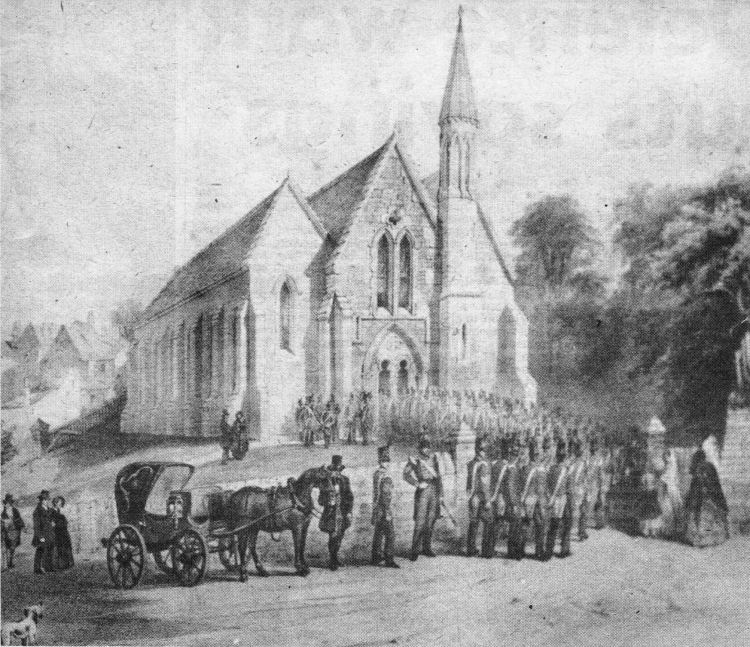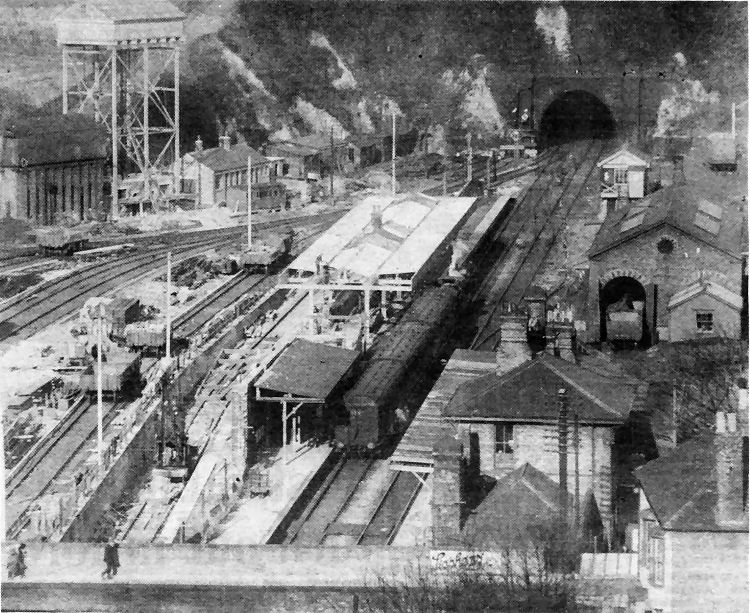Page Updated:- Sunday, 07 March, 2021. |
|||||
 Published in the South Kent Gazette, 5 November, 1980. A PERAMBULATION OF THE TOWN, PORT AND FORTRESS. PART 128.
CLARENDON The approach to this estate from the Folkestone Road, by the Engineer Inn, was an ancient footpath, but it was not originally intended to be a street, the first plan providing a street starting a short distance up Clarendon Hill, but that was abandoned, and a house facing- Folkestone Road was taken down to widen the approach to Malvern Road, in Belgrave Road, there is a building erected in 1882 as Primitive Methodist Chapel, the foundation stone having been laid on the 3rd of August, in that year by Mr John L. Bradley, then Mayor of Dover. About ten years after the building of Clarendon Street a demand for more houses of the same class led to the building of those which now cover the greater part of the land between Belgrave Road and Maxton, the principal streets laid out being Longfield Road, Westtoury Road and Underdown Road. Among the buildings then erected near the top of Belgrave Road was an Infants’ School for the Christ Church district. Alongside the Folkestone Road a series of villas have been continued all the way to Maxton. The populous settlement on the foothills of the Western Heights, is well placed for drainage and salubrious air, forming a compact and (pleasant residential locality. Apart from the main thoroughfares, (there are three rights of way through to the Western Heights—one from the Engineer Inn up Malvern Road, following the line of an ancient footpath; another up Belgrave Road, which used to reach the foot of the Heights by a clap gate, at the foot of the North Bastion; while a third approach is through a gap on the upper side of Clarendon Place, just below the north entrance of the Heights fortifications. These roads communicate with walks and playgrounds on the breezy hillside, extending westward to Maxton, and eastward connecting with central Dover.
WINCHELSEA Winchelsea is immediately opposite Clarendon, nestling under the western extension of the Priory Hill, and having a southern aspect. This estate, consisting of Winchelsea Road, Winchelsea Street and Winchelsea Terrace, was laid out by the late Mr Parker Ayers about the year 1865. Winchelsea Street, containing 55 houses, was completed in 1866, the Terrace; on a higher level, and Winchelsea Road being built later; the whole now comprising more than a hundred dwellings, mainly of the artizan class, and one public house. Eastward of Winchelsea, the hill on which it is built is burrowed by an elongated chalk pit, extending nearly half way through to Tower Hamlets. Many thousands of tans af chalk have been exported from here as ballast, and used as flux for glass manufacture in the North of England, but owing to the transfer of the glass works to Germany, the exportation of chalk ceased. The quarry site has subsequently been turned over to light industrial use and near the entrance an ambulance station serving the whole of the district has been built.
ELMS VALE At Elms Vale Road there has been great building activity since the opening of the 20th century. As far back as 1860 it was predicted that the flowing tide of population would set in this direction, and Mr Joseph Diggle, who built the now demolished tower on the apex of Whinless Down, had a project for. exploiting Elms Vale that was, at the time, regarded as visionary.

Consent to build Christ Church was dependent upon seating being- provided for 150 soldiers and a proportionate number of officers and this 19th century engraving depicts a colourful church parade. The horse and trap probably carried the commanding officer and his family to the church! The twin lancet windows shown were later replaced by a more decorative window from the south side of the redundant St. Barnabas Church, not St. James’ Church as was understood to be the case.

Pictured above is Dover Priory Station about 1876. The extension of the London, Chatham and Dover Railway service to Dover was completed on 22nd July 1861 before the station was ready. Third class return fare to Victoria — 50p!
|
|||||
|
If anyone should have any a better picture than any on this page, or think I should add one they have, please email me at the following address:-
|
|||||
| LAST PAGE |
|
MENU PAGE |
|
NEXT PAGE | |